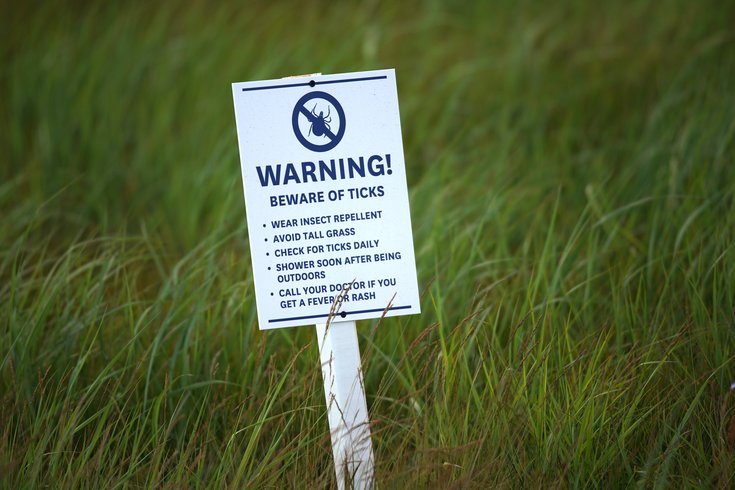
November 14, 2023
 Brian Ciancio/TNS/Sipa USA
Brian Ciancio/TNS/Sipa USA
Tick season could run longer and extend to other parts of the country if climate change worsens, according to the latest National Climate Assessment released by the U.S. government.
The U.S. government released its latest climate assessment Tuesday, highlighting the consequences for food systems, infrastructure and the economy if the planet continues to warm. It also details climate change's potential to spread infectious and vector-borne diseases, an ongoing problem that scientists say only will get worse.
The National Climate Assessment, a congressionally-mandated report, presents the current and future risks of climate change and recommends actions to avoid further harm. The fifth iteration warns that climbing temperatures are "expected to alter the distribution, abundance and seasonality" of disease-carrying insects and animals, as they seek new homes outside their historic habitats.
Those animals include vampire bats, whose range is expected to expand across Texas and Florida, possibly increasing human exposure to rabies. This is also a concern for Alaska, where Arctic and red foxes roam. During the 2020-2021 winter season, state officials reported an outbreak of more than 35 rabies cases in foxes, a stark contrast to the usual four or five cases each year. Shifting sea ice patterns and prey availability for the animals likely spread rabies further inland, the report concludes.
Climate change also has contributed to the steady increase in Lyme and other tick-borne diseases over the past 20 years, researchers say. The U.S. Centers for Disease Control and Prevention recently reported a dramatic spike in cases of alpha-gal syndrome, a red meat allergy associated with the lone star tick. The ticks used to primarily reside in the southeastern U.S., but have migrated north and west in recent years. They were first observed in Pennsylvania in 2017.
As global temperatures increase, lone star ticks and other disease carriers are expected to keep popping up in new areas – and also to stick around longer. Bugs do not need to seek shelter under logs or in trees during warmer falls and winters, prolonging the period when they can spread disease to humans.
Lyme disease is a particular concern. Cases have doubled in the U.S. over the past two decades, and Pennsylvania has had the highest number of cases in the country in 11 of the last 12 years.
Zika, West Nile, dengue and chikungunya viruses also could spread as changing temperatures and rainfall drive mosquitoes to different parts of the country, particularly Hawaii and U.S.-affiliated Pacific Islands. Valley fever, a flu-like infection spread through fungus, is expected to expand outside its usual southwestern region. Cases could climb by up to 220% by the end of the century, likely hitting agricultural and construction workers the worst.
A rare brain-eating amoeba that lives in warm freshwater lakes and rivers has been expanding its geographic range, too. The Naegleria fowleri, which killed a New Jersey man after a visit to a Texas wave pool in 2018, has migrated north to Virginia, Maryland and the Midwest over the past six decades.
The world will need to achieve net-zero carbon dioxide emissions by 2050 to keep temperature changes below 2 degrees Celsius, or 3.6 degrees Fahrenheit, according to the latest climate assessment. It recommends additional actions to avoid the worst effects of climate change, like sourcing all electricity from clean power like wind and solar energy and investing more in public transportation.
"Large reductions in greenhouse gas emissions are expected to result in widespread health benefits and avoided death or illness that far outweigh the costs of mitigation actions," the report concludes.
Follow Kristin & PhillyVoice on Twitter: @kristin_hunt
| @thePhillyVoice
Like us on Facebook: PhillyVoice
Have a news tip? Let us know.